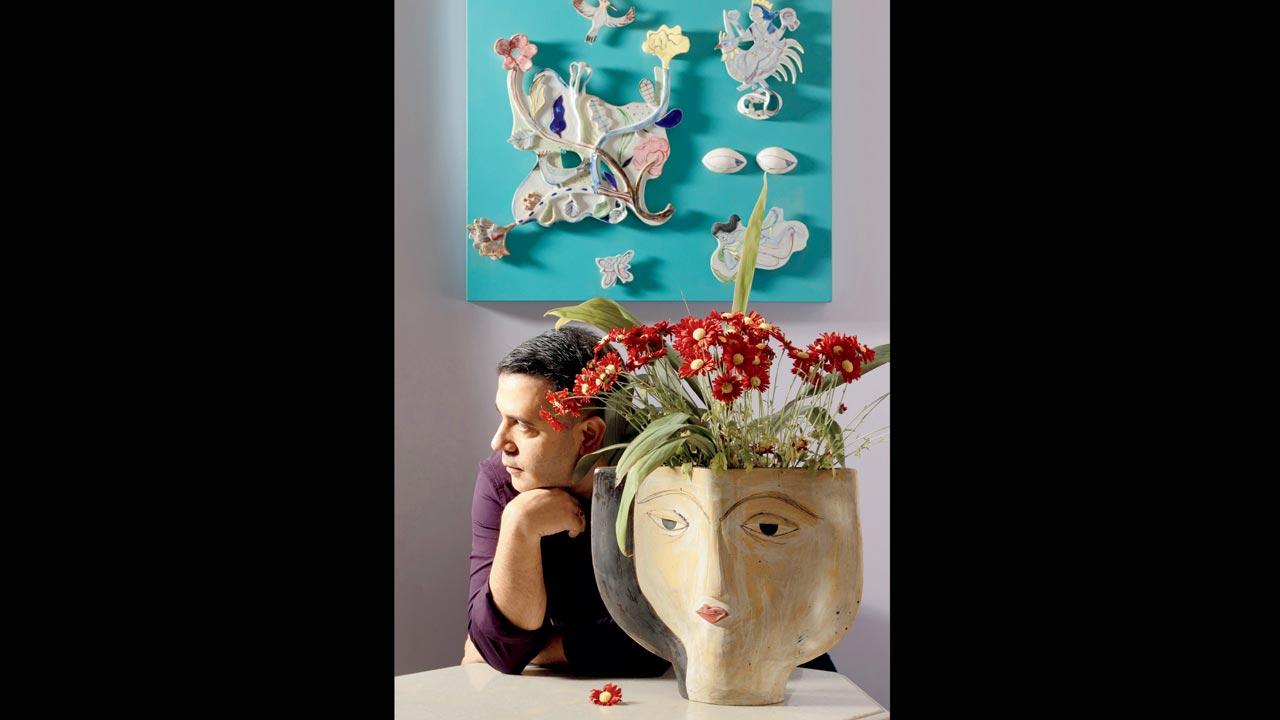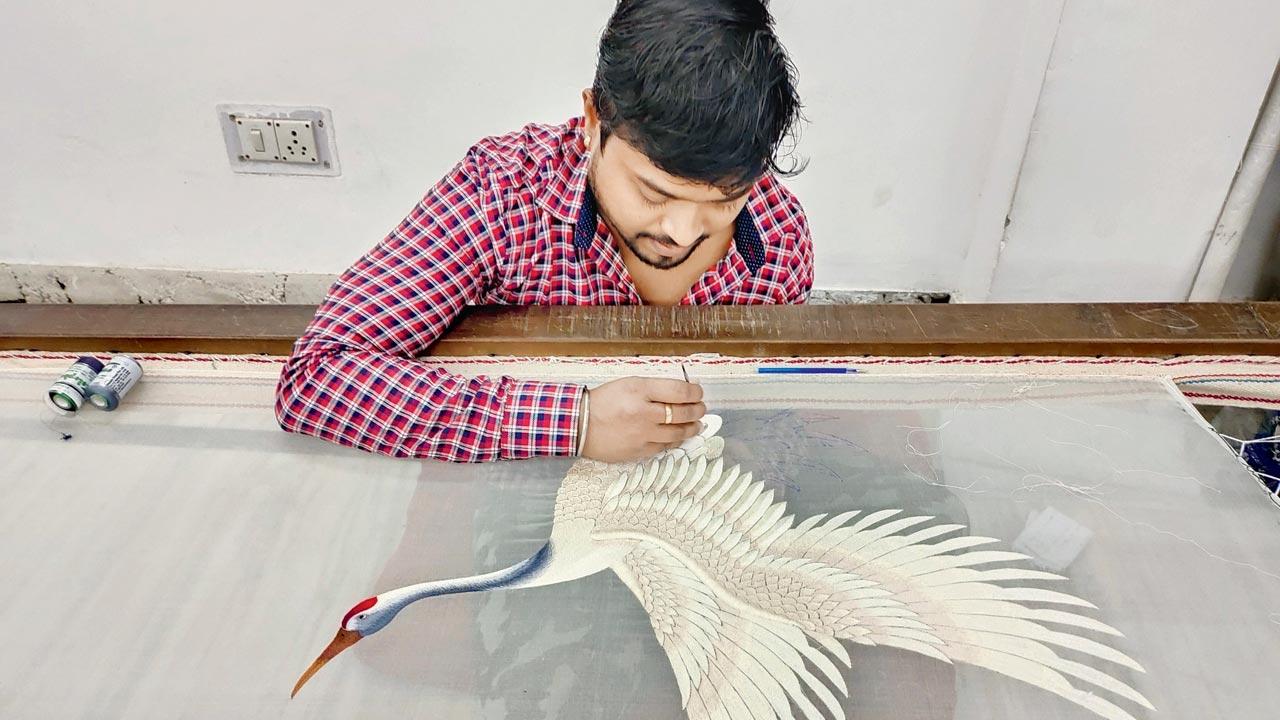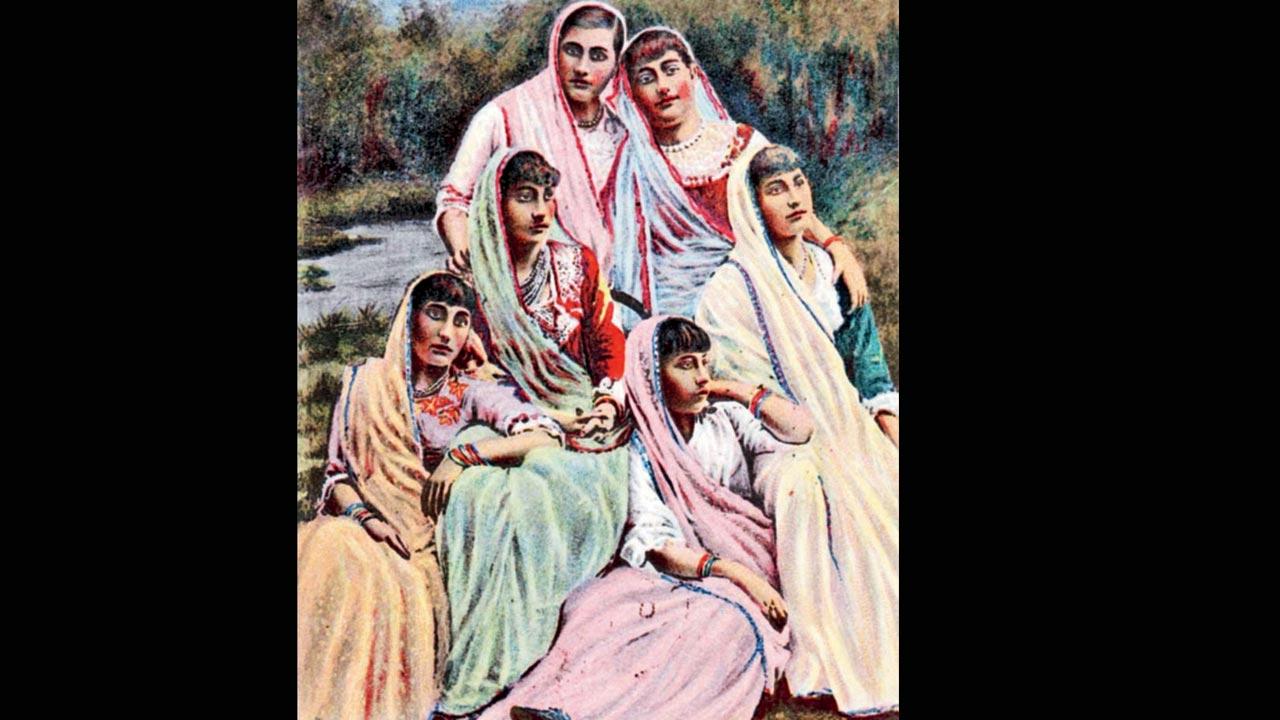Ahead of Parsi new year, mid-day chats up with proud Bawa and Gara embroidery’s modern custodian about growing up in a Bombay baug, fawning over Liz Taylor, and why the Parsi saree-blouse can make the heart race

A saree with traditional Gara embroidery teams up with an alluring halter blouse
We can all agree that like the French and their much-vaunted sense of style, the taste of India’s Zoroastrians or Parsis is a high-watermark of chic. The real allure of the Parsi female dress code lies in their sensual if not daring choice of blouses which they carry with bohemian nonchalance, and a certain je ne sais quoi, thinks Ashdeen Lilaowala. The blouse, he says, is usually at the centre of the chaos in most Parsi households before a lagan (wedding). Has it been given to the darji well in time? Will it fit like a glove? Is it glamorous enough but not quite to steal the show from the bride? Oftentimes, the saree is chosen after the blouse.
ADVERTISEMENT
On one occasion, Lilaowala says one of his Gujarati friends attended a Parsi wedding and recounted feeling overdressed in a pool of confident women of all ages flaunting their stylishly sensual twist on the saree. “The Parsi blouse, in my opinion, is a great equaliser, carried off by women of all ages and body types, a feat worth celebrating... if you ask me,” Lilaowala says, admitting that he is a bit of an old-soul in matters of seduction and glamour.
 Ashdeen Lilaowala. Pic courtesy/Srinath Rao
Ashdeen Lilaowala. Pic courtesy/Srinath Rao
And he isn’t fibbing.
To celebrate the launch of his brand’s new flagship store at Colaba, the Delhi-based designer who belongs to the community he is discussing, has paid a tribute to his favourite Hollywood icon in a campaign titled, Liz in Bombay. Shot at South Mumbai’s iconic Art Deco Liberty cinema, it features model and actor Anjali Sivaraman in a line of classic Gara sarees with floral borders and shimmering trellis. Lilaowala specialises in bespoke fashion inspired by the Parsi Gara, a style of heirloom embroidery that speaks of stellar craftsmanship and is flavoured with influences from the exotic Orient.
It was not just Elizabeth ‘Liz’ Taylor’s elegance and beauty that inspired Lilaowala, but also her activism for the LGBTQiA+ community and contribution to film. “I let myself dream... what if Liz were to visit 1950s Bombay for a movie premiere and we had been called to dress her for the occasion?” Back then, actresses would colour coordinate their ensembles and wore a string of pearls. “I think it was the most graceful period of fashion,” he says. The new store is special for Lilaowala since it marks a homecoming for the designer who relocated to the capital 17 years ago. “I always say, Delhi is my home but Bombay is my heart.”
 Anjali Sivaraman at Liberty cinema in a campaign titled Liz in Bombay that imagines how Lilaowala would have dressed Elizabeth Taylor
Anjali Sivaraman at Liberty cinema in a campaign titled Liz in Bombay that imagines how Lilaowala would have dressed Elizabeth Taylor
Much is already known about the designer thanks to his decade-long work in celebrating a rich legacy while giving it contemporary relevance. “People tend to forget that Gara embroidery is not just a craft but a visual identifier of the Zoroastrian community and its achievements,” he adds. What is perhaps not told as passionately is his interest in the anthropological side of fashion. “I am curious about the historical angle, the story of embroidery, and how we inherit certain aspects and then layer them in our own way.”
Lilaowala grew up in Godrej Baug at Nepean Sea Road in a family that revered textiles and design. “My mother was extremely fond of textiles. So, whenever my father travelled for work, he’d come back with a saree that spoke of the weaving tradition of the State he had visited. I was exposed to her beautiful collection that spanned Lucknow chikankari to kantha from Bengal,” he recalls. When his sister joined Sophia College to study design, he was the first to flip the pages of her stash of fashion magazines . “By the time I was in class 7, I knew my haute couture and designers.”
 “What’s most difficult is training the needlework artists in the specific art and narrative of Parsi Gara embroidery. It is very figurative and about creating exact forms and figures. A hand-stitched Gara could take between two to nine months to create, which is also why they are considered heirloom-worthy,” Ashdeen Lilaowala
“What’s most difficult is training the needlework artists in the specific art and narrative of Parsi Gara embroidery. It is very figurative and about creating exact forms and figures. A hand-stitched Gara could take between two to nine months to create, which is also why they are considered heirloom-worthy,” Ashdeen Lilaowala
After graduating in textile design from the National Institute of Design (NID), Ahmedabad, he worked for the UNESCO Parzor Foundation, and it’s here that he began researching the Parsi Gara for the Union Ministry of Textiles. “When I launched my brand, I was sure of one thing: I would look at the Gara with new eyes and give it a modern language.” In his endless quest, he found himself reconnecting with his Zoroastrian roots. “For a long time, we only worked with purple, maroon and navy blue. It’s these hues that mark the asal na gara [authentic gara sarees]. But we realised that there is a whole universe of unexplored aesthetic language that sits beyond cultural and ethnic boundaries.”
Even though Lilaowala uses the authentic khaka stitch or intricate French knot, he restricts its application to certain elements since it doesn’t make commercial sense given that it’s expensive to produce. This in turn has helped modernise the language around traditional embroidery—making it less ceremonial and more celebratory—while also opening up to a new non-Parsi market. “In Delhi, 95 per cent of my clientele is non-Parsi; Bombay is an exception since here, I still have loyal Parsi patronage. Given our rapidly declining population, if I were to depend only on Parsis, it would make for a bad business proposition,”
he laughs.
The Gara’s Mumbai Connection
By the early 19th century, Parsi traders had begun travelling to the Far East, trading in China and Hong Kong. They carried opium and cotton with them from India, which was bartered for tea. The Parsi community that had recently settled in Bombay (now Mumbai), had grown into a wealthy and influential group and wanted their clothing to reflect this newly acquired status. The women, therefore, adopted the rich Gara as their signature look.
 One of the most popular early postcards of Parsis was this composite portrait by Clifton & Co. The original albumen likely dates to the late 1890s, reprinted by other publishers. Pic/Wikicommons
One of the most popular early postcards of Parsis was this composite portrait by Clifton & Co. The original albumen likely dates to the late 1890s, reprinted by other publishers. Pic/Wikicommons
We owe the way we wear sarees today to Parsis
Social reformer and Rabindranath Tagore’s sister-in-law Jnanadanandini Devi (1850-1941) is usually credited with introducing Indian women to the Nivi drape that uses a blouse and petticoat to wear the saree, as we know it today. What is not widely known is that she chanced upon the three-piece saree idea and more importantly, the concept of wearing a blouse under the drape during her travels in Bombay (she lived in Calcutta), and by observing and interacting with the Parsi women she met. She would later experiment by adding Victorian-style blouses and coats to the mix following her travels to England.
 Subscribe today by clicking the link and stay updated with the latest news!" Click here!
Subscribe today by clicking the link and stay updated with the latest news!" Click here!







